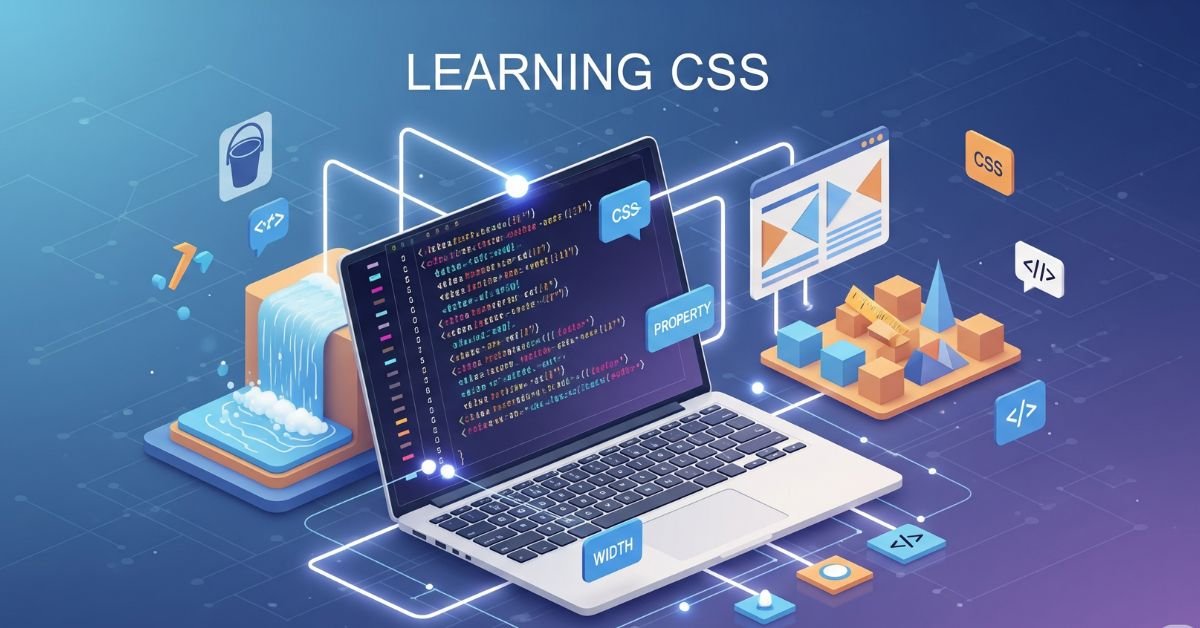If you ever asked yourself how long dose it takes to learn CSS, then you are definitely not the only one. CSS, or Cascading Style Sheets, is basically the underlying framework of every website’s layout. It does layouts to colors to fonts, basically how a site looks overall. A lot of beginners get extremely enthusiastic but also kinda lost regarding how long it takes to actually get a grip on CSS.
The point is, everyone’s learning timeline is different. Some learn the basics in a few weeks, and others might take months to actually get it down. In this guide, you’ll receive realistic timelines, learning phases, project examples, and some tips on how to make your CSS learning process quicker and a whole lot more enjoyable.
Key Factors That Influence Learning Time
When you ask how long does it take to learn CSS, the first thing to consider is the factors that affect your speed. Everyone learns differently, and your background plays a huge role. If you already know HTML or have experience with programming, CSS will feel easier. But if you are completely new to coding, it might take a little longer.
The time you spend each week also matters. Someone practicing two hours a day will move much faster than someone studying only once a week. Another big factor is how you learn. Reading about CSS without projects takes much longer compared to applying it directly in real websites. Finally, your resources also count. Good tutorials, structured courses, and real-world challenges can shorten your journey from months to weeks.
You will Like : How to Add Textures in HTML Games
Learning CSS Fundamentals
The first stage of your CSS journey is learning the basics. These include selectors, colors, fonts, margins, padding, and the box model. These concepts are the foundation of all web styling. Most beginners can understand the basics within one to three weeks if they practice daily.
At this stage, you can build small projects such as a simple personal blog or a styled landing page. These projects are simple but powerful because they give you confidence. Once you know how to change text color, adjust layouts, and add spacing, you begin to see the real magic of CSS.
CSS Basics Timeline
| Skill | Description | Time Needed |
| Selectors | Targeting elements with CSS | 2-3 days |
| Properties | Colors, fonts, backgrounds | 3-4 days |
| Box Model | Margins, padding, borders | 5-7 days |
| Basic Layouts | Simple positioning | 1 week |
Moving Into Intermediate CSS Skills
After learning the basics, the next step is intermediate CSS. Here you dive into concepts like Flexbox, Grid, pseudo-classes, and responsive design. These skills are important if you want to build modern websites that look good on phones, tablets, and desktops.
It usually takes one to two months to become comfortable at this level. The best way to learn is by building real projects. A portfolio website, a responsive business site, or a multi-page design will test your skills. These projects teach you how different parts of CSS work together and prepare you for real-world development.
Advanced CSS Mastery
The advanced stage of CSS learning is where you become a professional. Here you work with animations, transitions, CSS variables, preprocessors like Sass, and CSS architecture models like BEM. These are the skills needed to build complex, scalable websites.
This stage can take three to six months or even longer depending on how deep you go. For example, creating advanced animations requires strong design sense and practice. Building CSS architecture for large websites also takes experience. But once you reach this level, you are ready for front-end developer jobs or freelance work.
Advanced CSS Topics and Time Estimates
| Topic | Why It Matters | Learning Time |
| Animations | Creates movement and interactivity | 3 weeks |
| Transitions | Smooth state changes | 2 weeks |
| Variables | Consistent styling across projects | 1-2 weeks |
| Preprocessors | Write cleaner, reusable CSS | 4 weeks |
| Architecture (BEM/OOCSS) | Build scalable CSS | 6+ weeks |
The Role of Projects in CSS Learning
One of the most important parts of answering how long does it take to learn CSS is projects. Without projects, your knowledge stays shallow. When you build something real, you discover gaps in your skills and fix them faster.
For beginners, small projects like styled forms or buttons are enough. For intermediate learners, responsive landing pages help sharpen skills. For advanced learners, building a full multi-page website with animations, grids, and variables is the way to go. Each project becomes a new teacher, and this hands-on learning cuts months off your timeline.
So How Long Does It Really Take to Learn CSS?
Now let’s put all the stages together. For someone who wants to style simple blogs and basic pages, it might take just one month. For those aiming to become front-end developers, three to six months is realistic. But for mastery of advanced concepts, it often takes six months to a year of steady learning and building projects.
The reality is that CSS is always evolving. New features like container queries and subgrid appear often. This means learning CSS never really ends, but you get comfortable enough to build professional projects much faster than you think.
Estimated CSS Learning Timelines
| Level | Skills Learned | Average Time |
| Beginner | Selectors, properties, box model | 1 month |
| Intermediate | Flexbox, Grid, responsive design | 2-3 months |
| Advanced | Animations, variables, Sass, architecture | 6-12 months |
Tips to Speed Up CSS Learning
There are proven ways to make your CSS learning journey faster. The first is consistency. Practicing daily, even for 30 minutes, is far more effective than studying once a week. Another great method is recreating real websites. Pick a popular website and try to build its layout with CSS.
Using developer tools in your browser is another shortcut. By editing styles in real time, you learn faster than by just reading theory. Finally, joining coding communities or challenge sites like CSS Battle or Frontend Mentor can push your limits and give you feedback. These strategies not only speed up your learning but also make it fun.
Why CSS Learning Feels Different for Everyone
One of the most common frustrations for beginners is comparing their speed with others. You may see someone claim they learned CSS in two weeks, while another person says it took them six months. Both can be true. The difference comes from background, goals, and learning methods.
For example, a graphic designer who already understands color theory and layouts may learn CSS styling much faster than someone with no design sense. A programmer with JavaScript skills may pick up concepts like positioning and responsiveness quickly, while a complete beginner will take more time. This is why the timeline is flexible and should not discourage you. The important thing is steady improvement, not speed.
The Evolution of CSS and Why It Matters
Another point to consider when asking how long does it take to learn CSS is that CSS is not static. Over the years, CSS has evolved a lot. Features like CSS Grid, Flexbox, variables, and container queries were not available in early CSS. This means older tutorials might not teach you modern best practices.
For example, before Flexbox, developers had to use float-based layouts, which were tricky and messy. Today, Flexbox makes layout building much easier and faster. This evolution also means that even experienced developers continue learning as new features arrive. Mastery is less about finishing CSS and more about keeping up with its growth.
Read More About : How Generative AI will Transform Software Development by 2025
CSS vs Other Web Technologies
Sometimes beginners ask whether CSS is harder or easier than other web technologies. Compared to HTML, CSS is more complex because it involves design thinking and layout rules. But compared to JavaScript, CSS is simpler since it does not require logic or algorithms.
The real power comes when you combine all three. HTML gives structure, CSS gives style, and JavaScript adds interaction. Many employers look for developers who can use all three together. So, while you can learn CSS alone, pairing it with HTML and JavaScript makes your skills stronger and job-ready.
FAQ’’S
Can I learn CSS in a week?
You can learn the basics in a week, such as changing colors, fonts, and margins. But deeper concepts like Flexbox and Grid need more time.
Do I need to learn HTML before CSS?
Yes, because CSS styles HTML elements. Without HTML knowledge, CSS will not make much sense.
Is CSS difficult to master?
CSS is not very hard, but mastering it takes practice. Concepts like responsive design and animations need time to understand fully.
How long does it take to get a CSS job?
If you combine CSS with HTML and JavaScript, you can apply for entry-level jobs in about six months.
What is the best way to practice CSS?
The best way is by building projects. Start with simple pages, then move to responsive designs and interactive sites.
Conclusion
So, how long does it take to learn CSS? The answer depends on your goals and dedication. For simple styling, you can learn in weeks. For intermediate projects, expect a few months. For mastery, it might take a year. What matters most is consistent practice and building projects that challenge you. Remember, CSS is not just about rules; it is about creativity and problem-solving. With patience and steady effort, you will find that learning CSS is not only possible but also exciting and rewarding.




